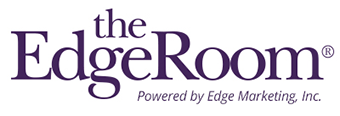Tips for a successful post-event strategy
by Vicki LaBrosse
You made it! Another successful event is in the books! All that careful preparation, creative promotion and your professionalism during the event itself have paid off. The works is done, but not so fast . . .
What happens after the event is an important part of the overall event program, so don’t save your post-event planning for the last minute. Start preparing early so that you can begin executing your strategy immediately after the event is over. Every post-event communication plan will be unique depending on your goals, but there are certain elements every successful post-event strategy should include. You can mix and match and supplement these with your company’s standard after-event procedures.
Here are some ways to keep the momentum going after an event:
Send a thank-you email
Thanking attendees who took time out of their busy schedules to come to the event is a must. It’s also a great reason to connect with them again. You will be surprised how far the small gesture of sending a simple thank-you email goes.
Make a post-event page
Having a post-event page on your website allows guests to revisit the experience and those who were not able to attend to see what they missed. You can simply edit and add to the landing page you already created prior to the event. Include speakers, sessions, award winners, entertainment, event stats, social media buzz and, of course, lots of pictures and videos.
Have your sales team follow up
If your event’s goal was to drive sales or customer engagement, have your sales team to reach out after the event via email or phone to potential clients. If you’re nurturing leads after a trade show or event, keep in the mind that prospects might have forgotten they stopped by your booth, so make sure your team doesn’t go straight into the sales pitch. Instead reach out with a relevant piece of content that provides helpful, non-salesy information.
Ask for feedback
Send a post-event survey to your guests and ask for feedback on the event: what worked, what didn’t, what their favorite part was, etc. Their responses will help shape your next event, hopefully making it even better. It’s not always easy to get prospects to fill out a survey, so it may help to incentivize it by offering a free product sample or trial, discount code or entry in a drawing to win a prize.
Invite them to the next event
If you have another event coming up that’s similar to the one they already attended, extend an invitation to them to continue the conversation at the next event. This is a great opportunity to build off of the buzz from this latest event and get prospects excited for your next one.
The best part of the post-event communication is that through your follow-ups, you’ll start to see which prospects are the most engaged and which ones you should prioritize your time for in that next step – whether it’s to book a meeting or invite them to a future event. Hopefully, the experience leaves you with new insights, a better understanding of what works, more knowledge about your attendees and great ideas about what to do next.
About the Author
Vicki LaBrosse, director of global public relations for Edge Marketing, has more than 18 years of marketing and communications experience in both the legal and accounting industries. LaBrosse works with clients to develop and execute comprehensive PR and marketing strategies that will help grow their business.



